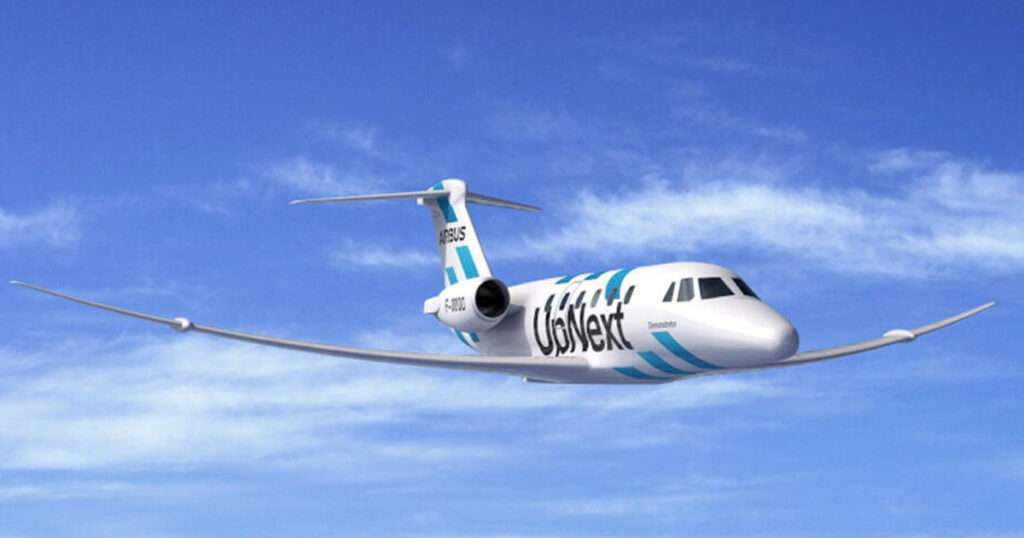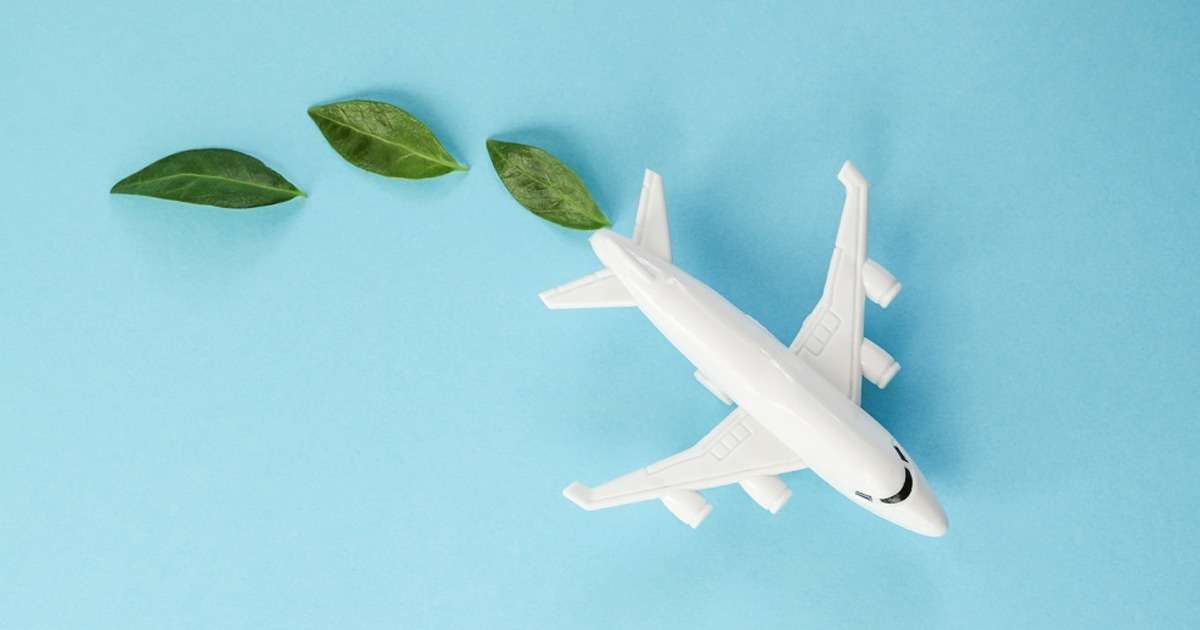After over four years’ absence, the Paris Air Show made its comeback last week. For this 54th edition, the international showcase for the aeronautics industry was keen to focus on the decarbonization of air transport. Responsible for 5% to 6% of global warming, the aviation sector is constantly being singled out for criticism. This major issue was widely addressed at the Paris Air Show, with a host of new solutions and spectacular announcements on the program. From the production of much cleaner biofuels to the modernization of the fleet… Discover our selection of 5 impressive solutions highlighted at the Show, committed to contributing to the fourth revolution in the aviation sector…
1) The pharaonic budget for the “green aircraft of the future
It was one of the most significant announcements on the eve of the opening of the Paris Air Show. At the Paris Air Show, French President Emmanuel Macron took the opportunity to announce his plan to decarbonize the aviation sector. At stake: €8.5 billion to support both the French market leaders and their subcontractors. This is considerable financial support, in addition to the “9 billion already promised to develop the hydrogen industry in France as part of the France 2030 plan”.
In terms of distribution, Libération reports that this new grant includes an initial envelope of “€300 million per year over the period 2024-2030 to boost the design of new aircraft and engines”. To this is added, “€200 million of public and private money allocated to the development of small electric or hydrogen-powered aircraft.”
2) “The world’s first low-carbon aircraft to enter service”.
Just a few years ago, Boeing and Airbus were overshadowing many aircraft. At this 54th edition of the Paris Air Show, it was the hybrid electric aircraft that stood out. These are more economical aircraft, capable of reducing C02 emissions by around 20%. These new-generation aircraft are completely carbon-free and can carry 12 to 19 passengers. Over distances ranging from 500 to 1,500 kilometers.

Among the players that stood out was French start-up VoltAero, with its Cassio 330 model. Founded by the former CTO of Airbus, these aircraft can carry 5, 6 and 12 passengers. In terms of range, they will be able to fly for up to 3.5 hours at 330 km/hour. A revolution made possible by the integration of a derivative of the motorbike engines of its recent shareholder, Kawasaki Motors. This partnership will enable them to be ready for their first flight by the end of the year, with the first deliveries scheduled for 2025.
Kawasaki’s expertise and innovation in engines brings a new dimension to VoltAero as we finalise the development of our electric-hybrid powertrain for the Cassio family of aircraft.
Jean Botti, ceo at voltaero.
3) The largest collaborative aeronautics project in France
Still on the subject of hybrid aircraft, another model stood out: the Eco-Pulse. A hybrid-electric distributed propulsion aircraft demonstrator, developed jointly by three big names in the sector. Daher, Safran and Airbus: Daher, Safran and Airbus. The aim of this consortium is to achieve the objectives of decarbonising air transport by 2050.
Through this demonstrator, Daher intends to develop the key architectural principles of tomorrow’s hybrid aircraft. This project allows us to reaffirm our commitment – as a player in general aviation with our Kodiak and TBM range – to more eco-responsible and efficient aviation.
PASCAL LAGUERRE, CTO at DAHER
Supported by CORAC (Conseil pour la Recherche Aéronautique Civile) and the DGAC, this demonstrator will make it easy to assess the operational advantages of such integration, particularly in terms of reducing the environmental footprint of tomorrow’s commercial aircraft. Ground tests are due to start very soon, with the aim of launching a first flight using hybrid-electric propulsion by the end of the year.
4) “Take Kair”, the promising new e-fuel project
Known by the acronym SAF, which stands for “Sustainable Aviation Fuels”, sustainable fuels are now a serious avenue being explored by the industry. This solution was highlighted at the Paris Air Show, with the launch of the “Take Kair” project. A highly innovative project, initiated by the four groups Holcim, IFPEN, Axens and EDF. It’s a highly strategic collaboration, also supported by the Air France-KLM group, which will be buying SAF worldwide in 2022.
The development of sustainable aviation fuel production processes is vital if we are to succeed in decarbonising air transport. It is also a fantastic opportunity to create jobs and strengthen the energy independence of France and Europe. Air France-KLM actively supports projects such as Take Kair, which aim to remove the first obstacle to the use of sustainable fuel: its availability.
Fatima Da Gloria de Sousa, VP Sustainable Development at Air France-KLM Group
A firm commitment to decarbonizing the market and anticipating the forthcoming measures imposed by the future “ReFuel EU Aviation” regulation. This draft law aims to force the blending of a percentage of SAF in kerosene-based fuel. The consortium and Air France KLM are working on this obligation, which they hope to incorporate into at least 10% of their flights by 2030. This transition will enable them to reduce CO2 emissions per passenger kilometer by 30%, compared with 2019…
5) The imminent integration of the first “Albatros” wings
“Observe nature, for it is where your future lies!” This statement by the famous Italian Leonardo da Vinci seems to have inspired the research branch of European aircraft manufacturer Airbus. For the past two years, Airbus UpNext has been working on a revolutionary device inspired by the behaviour of the Albatross. Like the seabird, it will have a part of its wing, located on the tip, that can be retracted in mid-flight.

As stated by the group, “in the face of a gust of wind, the albatross can unlock its wings to navigate better”. The aim, then, is to avoid turbulence or jolts in flight. By adapting to the wind, in-flight drag is also reduced, which in turn means lower fuel consumption.” Currently, in the test phase, Airbus UpNext claims to be capable of reducing fuel consumption by 5 to 10%. An innovation that could be installed on the next generation of aircraft by 2035-2040…





